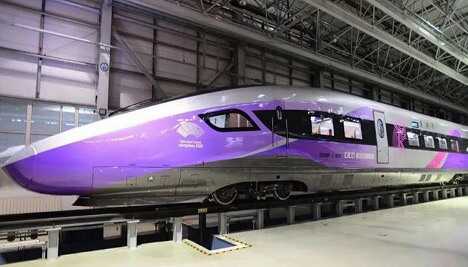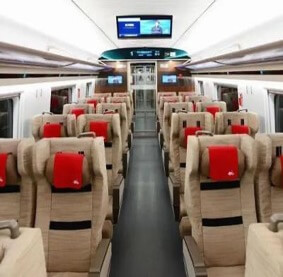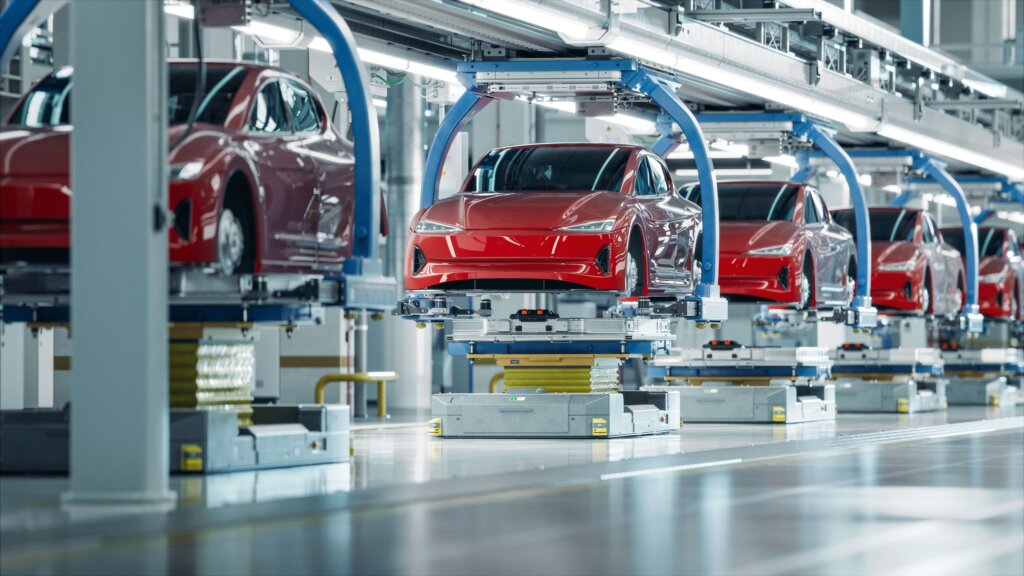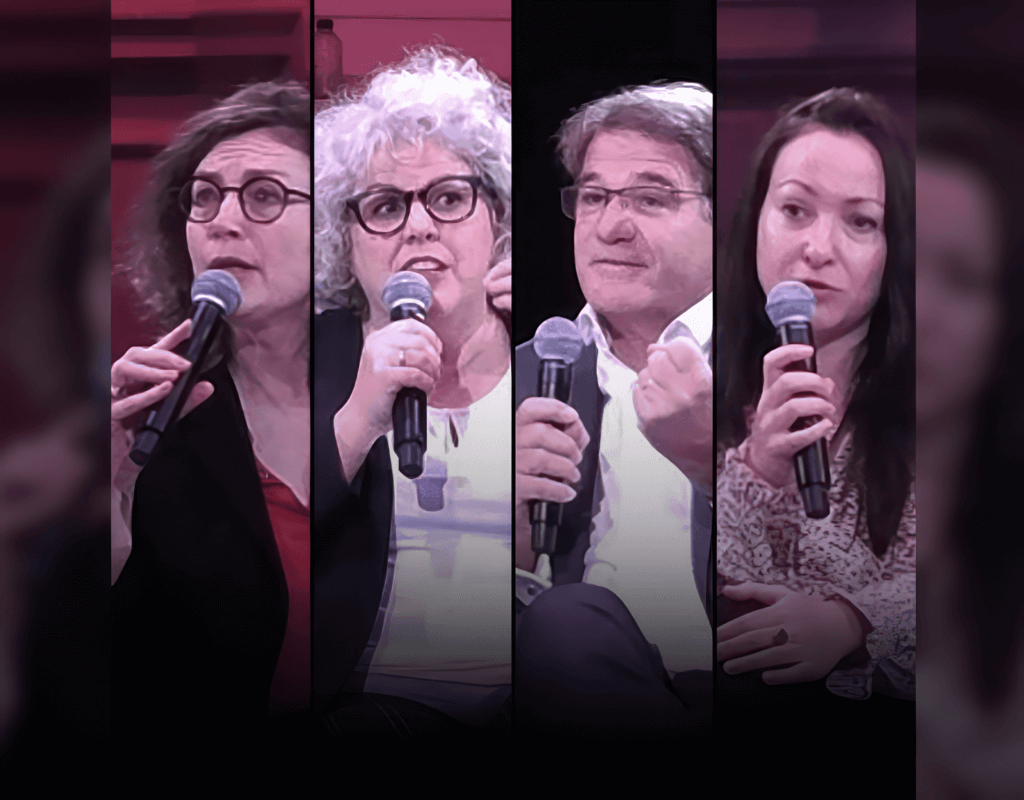Athletes, Fans Ride Electric Trains to Carbon-neutral Asian Games
Chinese electric high-speed bullet trains designed especially for the Hangzhou Asian Games currently in progress are carrying passengers between Hangzhou, the host city, and the five co-host cities of Ningbo, Wenzhou, Jinhua, Shaoxing and Huzhou in eastern China. The first-ever carbon-neutral Asian Games are in play.

Chinese electric high-speed bullet trains designed especially for the Hangzhou Asian Games currently in progress are carrying passengers between Hangzhou, the host city, and the five co-host cities of Ningbo, Wenzhou, Jinhua, Shaoxing and Huzhou in eastern China. The first-ever carbon-neutral Asian Games are in play.
Each of the trains is powered by an “intelligent electric multiple unit” (EMU) that whisks along eight cars with a total capacity of 578 seats to each of the five co-host cities at a top speed of 350 kilometers per hour (217 mph).
An electric multiple unit or EMU is a multiple-unit train consisting of self-propelled carriages using electricity as the motive power. No separate locomotive is needed as electric traction motors are incorporated within several of the carriages.
And these trains cut travel time to a low-carbon minimum. For instance, the farthest co-host city from Hangzhou is Fuzhou, 633 kilometers (393 miles) to the south, seven hours and 20 minutes by car. Traveling at top speed, the bullet trains make it in an hour and 48 minutes.
The high-speed trains traverse shorter distances to the closer co-host cities as well. Daily more than 100 pairs of high-speed trains run between Hangzhou East Railway Station and Ningbo Railway Station. The running distance is 154-159 kilometers (96-99 miles) and the journey takes between 45 and 78 minutes.
The 19th Asian Games, called the Hangzhou Asian Games this year, opened Saturday, September 23, 2023, after a year-long postponement due to COVID-19. Closing ceremonies take place on Sunday October 8.
Recognized by the International Olympic Committee, the Asian Games is a multi-disciplinary sports event held once in every four years. Athletes from all Asian countries can participate, and the current Games feature nearly 12,000 athletes from 45 nations and territories competing for 481 gold medals in everything from basketball to boxing, chess to triathalon, from tennis to swimming and sailing.
The purple painted Asian Games-themed trains are reportedly the latest and fastest of the high-speed Chinese trains; this model is called Fuxing, which translates as rejuvenation.
This model of electric high-speed train was developed by CNR Changchun Railway Vehicles and manufactured by the Chinese state-owned and publicly traded rolling stock manufacturer CRRC Qingdao Sifang.
“The Asian Games intelligent EMU will be the carrier for Chinese and foreign athletes, referees and spectators to appreciate the sports event of Chinese characteristics, Asian style, and splendor,” said Yin Zhenkun, deputy director of CRRC Changchun National Railway Vehicle Engineering Research Center.
“The train adopts a series of the latest scientific and technological achievements of China’s high-speed rail, which can provide everyone with a more intelligent and comfortable ride experience,” he said.

The trains have a bionic design that helps reduce aerodynamic resistance, cuts energy consumption by 10 percent and saves an average of 1.8 million kilowatt-hours of electricity a year.
Wang Minghua, deputy director of the communication department at the Hangzhou Games, said, “Zhejiang Communications Group’s purchase of smart EMUs for the Asian Games can rely on a series of important transportation guarantee projects for the Asian Games such as the Huhang Railway that has been completed…” The newly upgraded Huhang railway connects the city of Hangzhou with Shanghai, a distance of 200 km (124 miles).
Full 5G+Wi-Fi network coverage is offered on the Asian Games trains. In some carriages intelligent interactive terminals provide high-speed rail recreation, wireless screen projection, operation information and other services for passengers during the journey.
To facilitate the travel of passengers with special needs, the trains have barrier-free carriages, which have been equipped with 90-centimeter-wide passage doors, barrier-free toilets and wheelchair storage areas. Braille signs have been installed at multiple service points, such as seats, wheelchair storage areas and toilets, making it easy for visually impaired passengers to use.
Games Go Carbon Neutral for the First Time
This year, all of the Games’ competition venues are using renewable energy that emits little or no heat-trapping carbon dioxide (CO2), according to organizers, as part of Hangzhou’s mission to host the first carbon-neutral Asian Games.
Electricity sources include photovoltaic power transmitted from such areas as the Qaidam Basin in Qinghai province and the Jiayu Pass in Gansu province in northwestern China, and the Loess Plateau in northern-central China, in addition to wind power from Xinjiang Uygur autonomous region, among other places.
Green power accounts for 220 million kilowatt-hours, reducing CO2 emissions by 115,400 tons, according to the current plan, said Chen Rong, director of the Hangzhou Games Organizing Committee’s venue construction and management department.
Hangzhou has also been making its transportation system more environmentally friendly and promoting the use of electric vehicles.
State Grid Hangzhou Electric Power Supply Co says it has ensured that all Asian Games venues are equipped with charging facilities, bringing its citywide total to 102 charging stations and 2,024 charging ports.
The company has also installed China’s first high-power wireless charging station for new energy vehicles at the Asian Games Village in Hangzhou’s Xiaoshan district.
Digital Management System Keeps Score
Zhejiang Province authorities launched a digital management platform on July 11 to keep track of the first carbon-neutral Asian Games. It oversees the management of carbon emissions in the six cities, doing data collection, accounting, emissions reduction and evaluations.
A statement from the Hangzhou Asian Games Organizing Committee’s environmental protection department said, “The carbon footprint of a large sporting event covers many aspects, including construction of the competition venues, transportation, accommodation, competition preparations and spectators.”
“It is very difficult for humans to calculate and evaluate all this. With the platform, all we need to do is input and check raw data. Carbon emissions are automatically calculated by the system,” the Organizing Committee said.
Sun Yi, an environmental protection volunteer in Hangzhou, said, “Everyone is an active participant in making the Asian Games green. It’s not just about encouraging others but, more importantly, taking action in our daily lives.”
Toute l’actualité de Movin’On
dans votre boîte mail
Auteur
Partager
Tweets de @movinonconnect
Movin'On 2035 TODAY EP02 - Circular Economy & Competitivity
Movin’On 2035 TODAY EP01 – Fair Mobility for All https://x.com/i/broadcasts/1yNxagBrWZbGj
✨ THAT'S A WRAP!
Movin'On Summit 2024 has just concluded in Brussels!
More than 350 leaders and experts in sustainable mobility gathered to exchange ideas, collaborate, and share their vision for desirable and decarbonised mobility in Europe. Together, we explored ways to build…
🔴 Live from #MovinOnSummit2024
@AshaSumputh has just invited Denis Machuel, CEO at @AdeccoGroup and Florent Menegaux, President of the @Michelin Group & President of Movin'On
L’actualité de la mobilité durable
Découvrez les dernières tendances, des analyses thématiques et nos prochains rendez-vous






